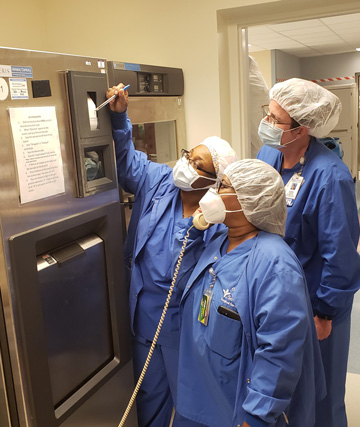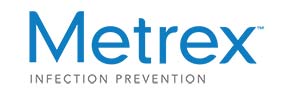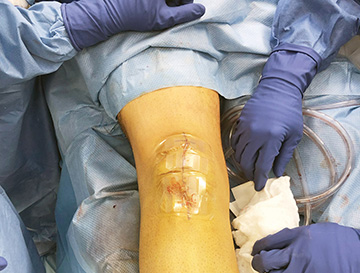Frontline workers were amazingly adaptable as they kept patients safe with infection prevention practices and effective surface disinfection.
 Credit: Metrex
Credit: Metrex
Sharon Ward-Fore, MS, MT(ASCP), CIC, FAPIC, Infection Prevention Advisor for Metrex.
As ASCs and hospital outpatient departments plan for a “new normal,” infection prevention experts contemplate the need for resources and strategies for the next pandemic. We spoke to Sharon Ward-Fore, MS, MT(ASCP), CIC, FAPIC, Infection Prevention Advisor for Metrex, and asked her about the company’s vision for the future.
Do you think that COVID-19 spurred different thinking among the healthcare profession about protocols for surface disinfection?
A protocol defines a set of procedures or steps to be followed for the accomplishment of a given task. In the case of surface disinfection, the protocol is driven by the manufacturer instructions for use (MIFU) for that particular product. With surface disinfection, most protocols are similar, with the possible exception of the contact or “dwell time.” So, I don’t think the protocols have changed, but I do think there is a renewed awareness of the many different surface disinfection products available on the market.
What would you say are the “lessons learned” from COVID-19?
Yes, there are many lessons learned from the pandemic. First and foremost is the need for “preparedness.” No one could have anticipated the scope of this pandemic, but knowing what we know now, stockpiling certain supplies, like PPE and disinfectants, for future use is a good idea. Also stockpiling critical medications, medical equipment and other supplies should also be considered. Secondly, the importance of training and auditing practices often – especially when you run out of what you typically use and have to introduce something new.
What can front-line healthcare workers expect for the “new normal” going forward?
Healthcare workers are amazingly adaptable to change, and the pandemic demonstrated their ability to adapt. They were already used to wearing PPE, performing hand hygiene, and cleaning patient care equipment, but not on a pandemic scale. The pandemic brought home the importance of following these best infection prevention practices to keep everyone safe. What really changed was the VOLUME of patients they cared for. The “new normal” is the return to their normal patient workload.
Can the current products available fight against another pandemic or new virus that may emerge?
I think it’s important to consider surface disinfectant products that have the “Emerging Viral Pathogens” claim. This gives these products the EPA claim for use against future, unknown viruses. This way you will already have a product sanctioned for use against the next viral pandemic organism.
Why is the Metrex Research, LLC partnership with the Association for Professionals in Infection Prevention Control and Epidemiology (APIC) important?
When important stakeholders, like APIC and disinfectant companies like Metrex, work together it benefits the user. Metrex provides more than products. It is positioning itself as a resource IPs can use for things like continuing education, white papers and expert speakers sanctioned by APIC.
Can you give an overview of the Emerging pathogen program at Metrex and what it hopes to accomplish?
Metrex is a company helping healthcare facilities provide a safer environment for the patient by providing disinfectant products that clean and disinfect, reducing the possibility of pathogenic organism transmission to patients and healthcare providers. A cleaner, safer environment means better outcomes for patients. The Emerging Viral Pathogens Program (EVPP) provides an extra level of “protection” against the next unknown viral threat. Disinfectant products registered for use against viral pathogens in one category of the Spaulding Classification model are presumed effective against viral pathogens in less resistant categories, and the EVPP is intended to serve as a conservative approach to identifying disinfectant products likely to be effective against emerging pathogens. Metrex has taken the steps to achieve this claim with CaviWipes 2.0 to help healthcare prepare for the future.
After a tough year-and-half of keeping patients safe with proper disinfection protocols, what do you see as future positive trends in infection prevention?
The pandemic has brought more attention to the profession of Infection Prevention. Hopefully more resources will be allocated to building robust Infection Prevention programs in healthcare because now their importance and value has been highlighted.
Note: For more information, please go to www.metrex.com.
 CREDIT: Bon Secours Mary Immaculate Hospital
CREDIT: Bon Secours Mary Immaculate Hospital.svg?sfvrsn=be606e78_3)



.svg?sfvrsn=56b2f850_5)